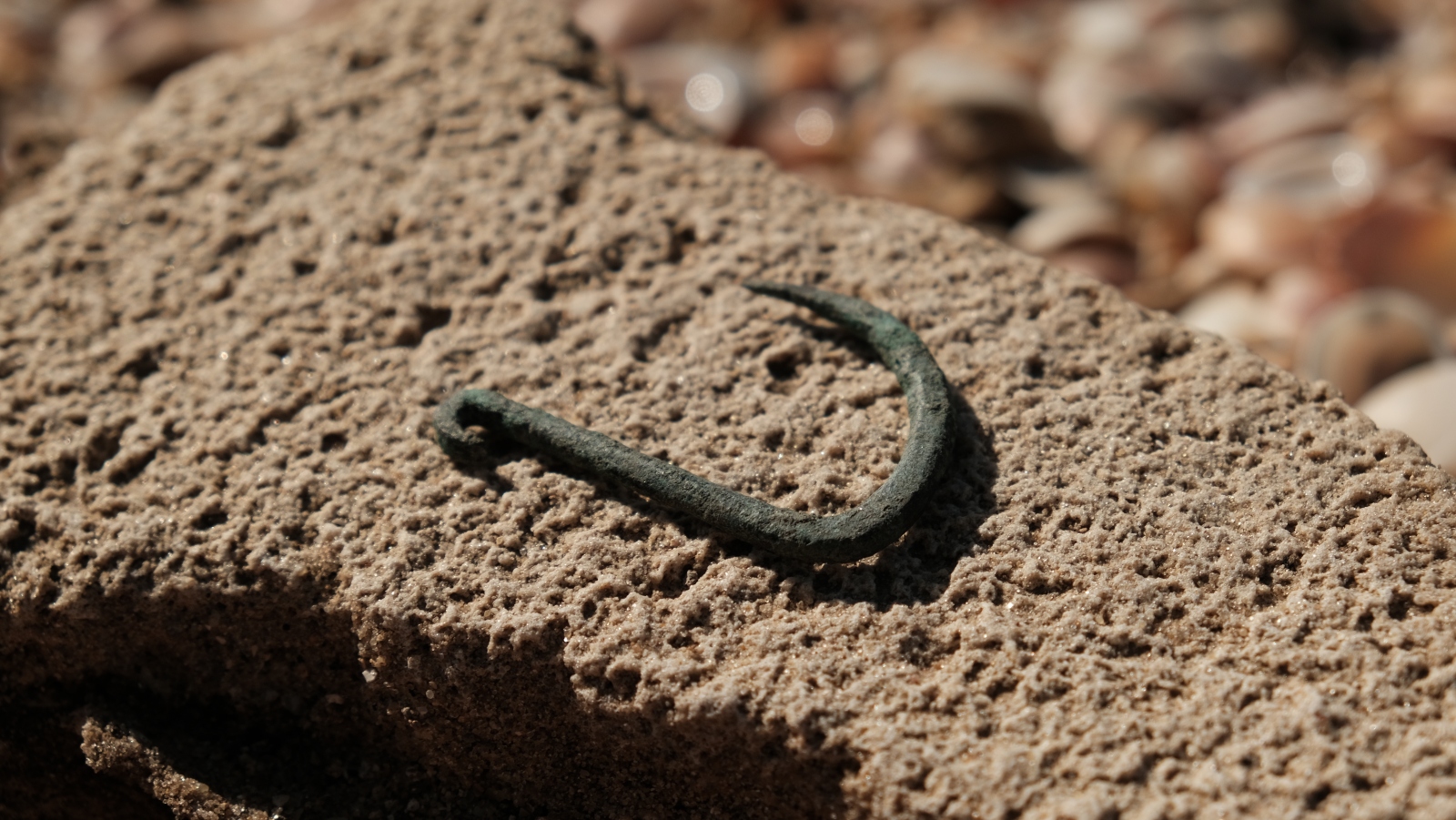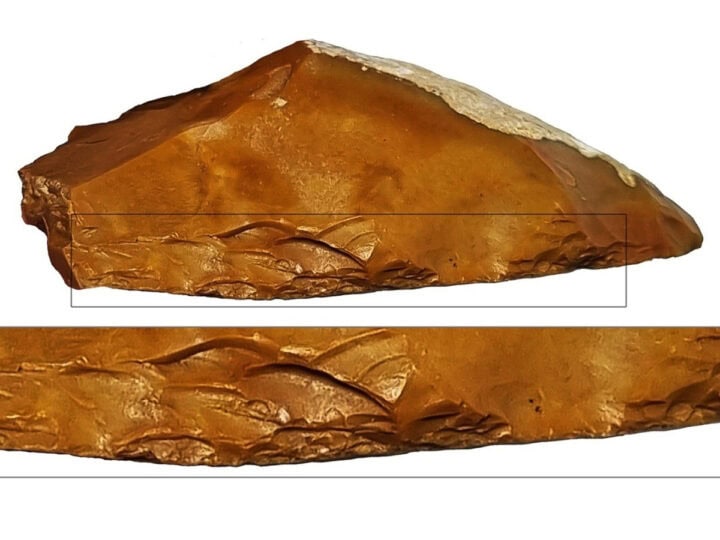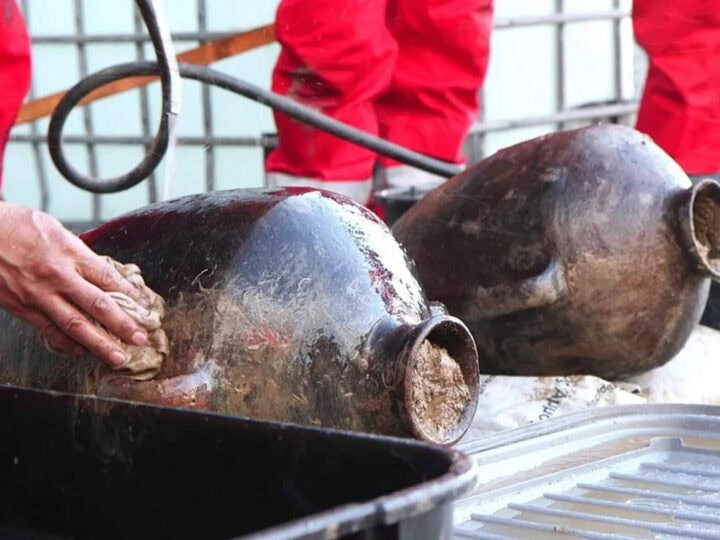A 6,000-year-old copper fishhook—possibly for catching sharks or other very large fish — discovered in 2018 during Israel Antiquities Authority excavations in Ashkelon, will be exhibited for the first time at the 48th Archaeological Congress on April 3.
“This unique find is 6.5 centimeters long and 4 centimeters wide, its large dimensions making it suitable for hunting sharks or large tuna,” said excavation co-directors Yael Abadi-Reiss and Daniel Varga.
“More ancient fishhooks found previously were made of bone and were much smaller than this one. The use of copper began in the Chalcolithic period. It is fascinating to discover that this technological innovation was applied in antiquity for the production of fishhooks for fishermen along the Mediterranean coast.”
In the Chalcolithic era – roughly mid-fifth millennium to third millennium BCE – residents of large villages around Ashkelon pastured sheep, goats and cattle, and grew wheat, barley, legumes and fruit.
“We learn about the dietary habits of the people who lived here 6,000 years ago from the remains of animal bones found in ancient rubbish pits, from burned wheat grains found in ovens, and from the hunting, cooking and food-processing tools retrieved, including flint sickles, and a variety of pottery vessels that served for the storage, cooking and the conservation of food by fermentation and salting,” said Abadi-Reiss.
“The rare fishhook tells the story of the village fishermen who sailed out to sea in their boats and cast the newly invented copper fishhook into the water, hoping to add coastal sharks to the menu.”
Researchers are continuing to study the artifact using advanced technologies.
Israel Antiquities Authority Director Eli Escusido said the IAA’s new national campus in Jerusalem will contain a visitors’ center where the public can see “some of the wonderful treasures that come to light from underground.”
Fighting for Israel's truth
We cover what makes life in Israel so special — it's people. A non-profit organization, ISRAEL21c's team of journalists are committed to telling stories that humanize Israelis and show their positive impact on our world. You can bring these stories to life by making a donation of $6/month.









